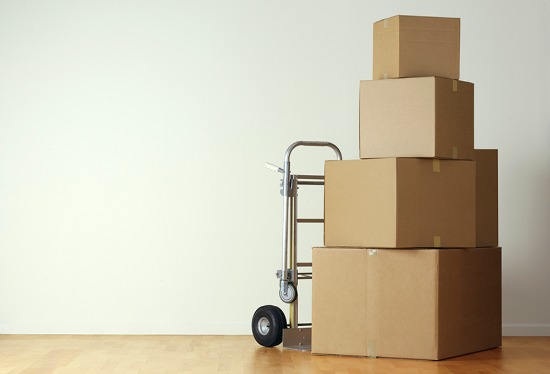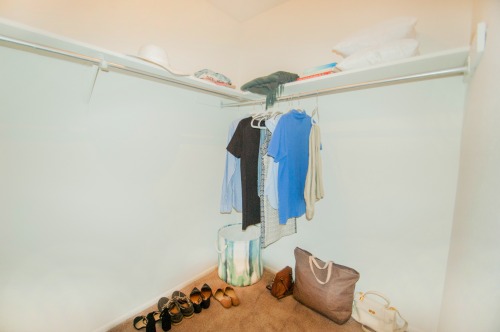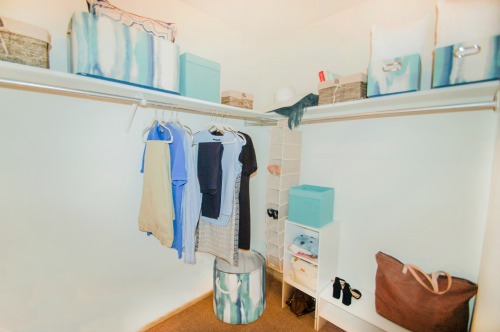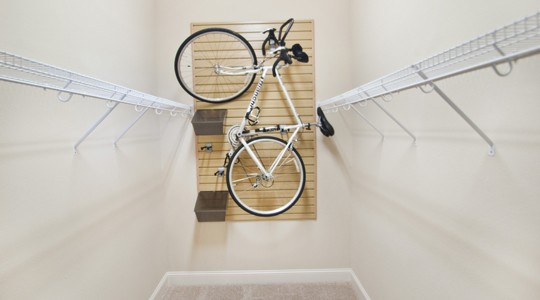
Congratulations, you’ve found a great new apartment!
Before you settle in, you must go through the inevitable moving process. If you opt to do the moving yourself, there are a number of factors you must consider. Number one: how am I going to get my stuff from here to there? Before you jump the gun and rent a truck, consider the following items.

Big move on the horizon? Pack up every last belonging and plan to rent or purchase a dolly.
Thinking about renting a truck for a DIY move? Consider these factors:
For the most part, if you’re staying in the same place or making a short move (from the city to the suburbs), a rental truck makes sense.
However, if you’re moving across the state or out-of-state, make sure the company offers one-way trips. That way, you can drive the truck from your original destination and leave it at the new one. Before renting, make sure to check whether or not the company charges large fees for driving out-of-state or not returning to the pick-up destination.
You can estimate your U-Haul rate here.
Once you have decided you’re renting a truck, make sure to get the right size. You don’t want to be driving around an extra-large truck for no reason, but by the same token you don’t want to choose a truck that’s too small to safely fit your belongings. Make sure to consult your truck rental company before settling on a vehicle.
Make sure to reserve your truck for the correct length of time. If you think your drive will take two days, reserve the truck for three. You don’t want to be hit with crazy overage fees.
Also, book your truck as far ahead of time as possible. Trucks can be hard to nail down, especially during peak moving season (May through September).
If you have several vehicles, you may need to rent a trailer and a hitch to tow them. Make sure to have the correct materials to transport your motorcycle, boat, or extra car safely.
Once all of your moving transportation is set up, you need to think about the actual items you are moving. Buy dollies, pads, and packing materials to avoid damaging any furniture or decor. You’ll also likely be able to rent these items from your moving company.
Movers are a fantastic option if you have more flexibility in your budget. Professional movers can move more quickly, safely, and easier than you can, even with the help of your friends and family in tow. Here are our top 3 ways to save money when you hire movers:
Although the end of July and early August are prime moving seasons for students, if you can move in less busy moving months or in the middle of the month, movers usually have more availability. This can translate to lower rates!
The closer you try to book movers to your move, the harder it is to a) find ones who are available and b) find them at an affordable price. Aim to book a moving company as far in advance as possible to secure lower rates and enjoy that priceless gift: peace of mind. At least two weeks in advance is recommended.
It’s easy for additional charges to spring up during the moving process if you use movers. Most movers charge for extras like packing, unpacking, flights of stairs, long-distance carrying, or multiple pickups. Remember to be as transparent as possible about the conditions of your move, and confirm all charges before movers get started so you aren’t taken by surprise.
Read our blog post on How to Save Money with a Moving Company for even more top tips!
The old saying goes that you don’t own your cat – your cat owns you. Cats are typically quite clean and low-maintenance animals, but you’ll still need to put in the extra effort to ensure your apartment doesn’t emanate that unsavory “litter box smell.”
Here are a five ways to keep your space clean and inviting while living with feline roommates.
Wipe down counters and surfaces. Cats are avid athletes, and they’re not too mindful of those “no pets on furniture” rules. It’s easy for most cats to jump on high furniture and surfaces, meaning their paws have been just about everywhere – including your kitchen counters. Because cats use the litter box, you certainly don’t want any lingering debris or germs in any food prep areas. Get in the habit of wiping down your kitchen counters before and after meal prep for a clean slate.
Brush your cat regularly. The benefit here is twofold. Although cats are superb self-groomers, they can suffer from hairballs as a result. If you take time each day or a few times a week to gently brush your cat, you’ll reduce the risk of hairballs and help mitigate excess fur that can end up on your furniture and in your home. Win, win! Our hands-down favorite tool is the Furminator brush, which works wonders for both shorthair and longhair cats.
Choose furniture wisely. Many animal professionals agree that declawing your cat is not humane. If your cat has its claws, however, your furniture can become a prime target! Try to avoid materials and fabrics that are more palatable to your cat like wicker or basic upholstery. Instead, opt for leather, treated wood, or metal. If new furniture isn’t an option, you can create your own natural, safe “cat repellant” spray to help discourage them from clawing. Simply mix a few drops of 100% orange essential oil into a spray bottle with water and spray your furniture generously. Most cats don’t like the smell of citrus and will steer clear! And remember, scratch pads are a great way to redirect your cat to a safe scratching zone.
Vacuum at least once per week. Even if you brush your cat regularly, you’ll still want to vacuum at least once per week to mitigate fur and litter debris. You might consider investing in a handheld vacuum to clean up targeted areas with ease, like Fluffy’s favorite chair or the litter box area.
About that litter box… Aim to place your cat’s litter box in a private, infrequently used area like a spare bathroom or closet space. Ideally, choose a space with tile or hardwood as opposed to carpet. Clean your cat’s litter box at least once a day – and remember, the longer waste sits in a litter box, the more likely it is to smell. Keep helpful tools at arm’s length, including plastic bags to clean up the waste and a small broom or handheld vacuum to remove any excess litter that may have fallen onto the ground. You can also put a mat or old towel underneath the litter box to help prevent your cat from tracking it into other parts of the house.
For more pet tips, visit our Living with Pets posts on the blog!
Cooking is a great way to connect with loved ones and save a little money while you’re at it. But home food prep can become less affordable when you consider all the kitchen tools you need to put a meal together. While we always prefer quality over quantity every time, there are a few shortcuts you can take to save cash when it comes to kitchen tools. Take a look at five items where you can save and five where you should splurge– you’ll have a chef-worthy kitchen in no time!

Our Surf Rider apartment community in Metairie offers spacious kitchens perfect for foodies.
Mixing Bowls: No need for fancy ceramic bowls here. A set of simple, stainless steel bowls will provide you with the mixing space you need and also resist bacteria buildup. Bonus? They also perfect for a lunchtime salad or gigantic bowl of cereal.
Baking Sheets: Baking sheets are prone to food buildup, so no need to purchase expensive ones that will lose their luster quickly anyway. Pro tip: use a topper like aluminum foil or a Silpat sheet to preserve the smooth surface.
Spatula: Even the most expensive spatulas are still relatively affordable, but since these don’t get much wear and tear, an inexpensive model will last!
Colander: Whether for draining pasta or rinsing fruit and vegetables, this smart tool doesn’t have to be a splurge. Any model will do, although we recommend stainless steel over plastic for its antibacterial properties.
Nonstick pan: This is a kitchen workhorse, meaning that it’ll accumulate wear and tear quickly. It’s best to replace the pan as it wears (evidence suggests the nonstick coating can have carcinogenic properties as the coating breaks down).
Stainless Steel Skillet: Unlike a nonstick pan, this is a kitchen necessity where you can (and should) spend a little extra. These pans are good for everything from pancakes and eggs to steaks and chicken – and since they don’t have a coating, it’s better to get a high-quality pan that will last and last.
Cutting Board: A teak wood cutting board is an incredible kitchen tool. Instead of a cheap plastic board, teak wood boards are easier on your knives and also limit bacteria – even if any sinks into the wood, it can’t survive inside (unlike a plastic board where bacteria can hang out on top).
Food processor: The right food processor will make you a whiz in the kitchen. The key here is to opt for a quality processor that actually does the job. Cheaper models often don’t process the food properly and are prone to breaking quickly.
Storage containers: Hear us out – it might be tempting to buy cheap, plastic storage containers, but consider spending a little extra on quality containers that won’t crack, are BPA free, and are microwave safe. Brands like Tupperware and Pyrex are a good place to start.
Olive Oil: Did you know that a high percentage of olive oils available for purchase are actually fraudulent? Oils of inferior quality are being passed off as extra virgin olive oil. Instead, reach for real, high-end oils or go for a happy medium with Whole Foods California 365 – it’s “real” olive oil at a more digestible price point.
Closets inevitably become disorganized, messy and cluttered if there’s no rhyme or reason to them, so to keep your closet in order, we have a few simple but necessary closet organization tips to follow. Usually closets never feel big enough, but with these space management tricks, you can maximize the size of your closet.

Yes, a clutter-free closet is possible. (Photo courtesy Rubbermaid Products on Flickr)
Closet organizers like shelves and bins can do wonders for utilizing space. Storage units should be used for anything that isn’t on hangers in a closet, like shoes, accessories, delicates or foldable clothing. These kinds of dividers and containers can be placed below hung clothing to use that open space to make room for more items so they don’t all wind up on the floor, under the bed, or bulging out of dresser drawers. Bigger, clunky items like sporting equipment can be put on top of shelving.

We used a real 1st Lake Properties closet to put our tips to the test. Here’s the “before closet.” It’s still pretty neat, but it can definitely be more organized.
To maximize space, store any items you aren’t actively using in boxes or baskets. Aim to place these at the very top of your shelving, along with sporting equipment and other large, infrequently used items. You can color code these boxes or baskets to help you know what’s inside without having to reach for them. Here at 1st Lake, we use blue baskets for bedding and brown baskets for books and other miscellaneous items. This creates harmony and peace in the closet and helps us maintain a clean, organized look.

Storage boxes and shelving units make a huge difference!
As a general rule, you’ll want to store things in the following order:

This closet at our Bella Ridge property is spacious to hold all your clothes… plus sporting equipment!
A simple way to organize your closet seasonally is to place your most-used items of the current season in a visible, accessible location. If it’s winter, place your summer clothes and bathing suits in storage bins so they won’t take up the needed space for jackets, pants and sweaters. If it’s spring time (or even if it’s not) spring cleaning is always a good idea. Take a closet inventory, and separate unwanted clothes to make room for what’s really needed. Then, donate those unwanted items and pat yourself on the back for doing something good.
Once you’re in good shape for a particular season, here are a few more simple tips on sorting your clothes:
Though a very famous character from a glamorous NYC show dismissed closet shoe organizers as unthinkably tasteless, real ladies should think twice before thumbing their noses at these handy space savers. Amazon.com, Kmart, Target, and other such retailers sell a variety of types of shoe organizers. Certain varieties are meant to be suspended from a hanging rod, like the kind in your average closet, while others are designed to hang from a door or sit on the floor. For maximum space saving, the shoe organizers that hang from a door are best. These contraptions hold anywhere from 10 to 30 pairs of shoes and most cost around $20, though there are many overly fancy varieties that cost upwards of $50.
Vacuum storage is an excellent way to save valuable closet space. While it’s tough to separate winter and summer wardrobes in a place like New Orleans where “summer” and “not summer” are considered seasons, vacuum packing winter clothes and blankets can save a surprising amount of space. Stores like those mentioned in the previous section sell fancy bags with vacuum nozzles and zippers and such; but, you can achieve almost the same reduction in volume by storing items in a regular plastic bag, vacuuming the air out of the bag, and sealing the bag quickly. However, some styles of the store bought bags are made to be hung in a closet, which is a feature that is not so easy to duplicate at home. For items such as ties and scarves, you can but a multi-item hanger for about $10. On average, one such hanger holds between 10 and 20 ties or scarves.
One last thing to keep in mind is to make sure you devote enough time to organizing your closet. You may not be able to do it in 30 minutes, and you won’t want to leave the project half completed to come back to. It’s definitely worth the time it takes to organize, and should be done according to season. Happy cleaning!
1st Lake Properties has a large selection of New Orleans area apartments communities with ample closet space to make organizing a closet much easier!
If you found this article helpful, please share on Facebook or Twitter
Related posts:
Must Know Refrigerator Organization Tips
Apartment Spring Cleaning Checklist
How to Clean a Refrigerator: 5 All-Natural Fridge Cleaning Hacks
Dogs are family. It’s just that they shed a whole lot more than our human family. Dogs bring us so much love and light in our lives, but they also require a little extra cleaning at home. Read on for tips on how to maintain a picture-perfect apartment, even when you’ve got a four-legged friend or two.
In addition to basic care for your dog — flea control, regular vet visits — there are a few habits you can implement at home to help keep your apartment clean. Here are 7 helpful habits to work into your routine:
Keep washable mats at each door: You might have a welcome mat outside the front door, but consider placing one just inside the door as well. This simple addition can help tamp down dirt and mud that dogs might track in. Remember to add mats both inside and outside any additional doors, as well. And remember to choose a washable mat!
Groom and bathe your dog regularly: Frequent bathing and grooming is one of the best ways to limit dog hair and dander inside your home. Try to brush your dog every day (preferably outside) to loosen and remove any dirt or shedding fur. Another great habit is to wipe your dog’s paws after a walk or trip to the dog park. Keep scrolling for one of our favorite products to tackle the job!
Clean up accidents ASAP: Accidents happen, and even though it can be frustrating and you might just want to ignore it for a little bit, you’ll be a lot better off to stop what you’re doing and clean things up. The longer dog urine sits, the more likely it is to permanently stain (and stink!). If it’s a, um, solid situation, remove any residue with a dull knife. Then, blot fresh stains with a cloth and apply lukewarm water mixed with a drop of dish soap. Keep alternating dry blotting with the soapy water solution until the stain is gone. You can also try ingredients like baking soda and hydrogen peroxide to help lift stains — just do a small test first for colorfastness.
Wash all bedding regularly: This means human bedding and pet bedding! Regular washing helps mitigate any lingering odors and accidents you may have missed.
Keep your dog active – before he comes in the house: This one is simple — a tired dog simply doesn’t get into as much trouble inside. Some of our properties like Bella Ridge have on-site dog parks to make it easy on you!
Have old towels handy for rainy days: New Orleans weather can be unpredictable, but you can pretty much count on rain. Keep old towels in a bin in the pantry so they’re at arm’s reach to quickly dry off a wet dog. You can also use the towels to cover up rugs or carpet so your wet dog can get from A to B without ruining anything!
Avoid micro-suede and micro-fiber furniture: This furniture is more affordable, but it’s also a magnet for pet hair. If you’re able to afford a leather couch or chair, you’ll be rewarded with an easy-to-wipe-down surface that will last for years. Of course, you could also try (key word: try!) to not let your dog up on the furniture.
A lot of helpful cleaning products are probably already inside your kitchen. Take a look at a few of our favorite products for a clean and happy home for you and your dog.
Baking Soda: This grocery store staple is an affordable and effective way to remove odors. Sprinkle it on carpets before vacuuming, or add it to a spray bottle with water and a drop of essential oil, then spray in the air or on curtains and upholstery.
Hydrogen Peroxide: Try pouring it on pet accidents (remember to test for colorfastness first) to help eliminate tough stains.
Grooming Wipes: You can buy special wipes just for dogs, but good ol’ baby wipes will work, too. Keep a box by the front door, and wipe down your dog’s paws after every outing.
Stain-resistant dog beds: Invest in a high-quality dog bed from brands like Crypton. Not only are the beds extremely durable and easy to wash, they also feature anti-microbial stain protection and a resistant fabric barrier that prevents germs from penetrating into the cushion.
Roomba: These are expensive vacuums, no doubt. But they’re one of the most effective ways to win the war against dog fur. The vacuums run automatically, taking the burden completely off you. They also learn to get to know every nook and cranny of your home over time for a deeper clean than you ever thought possible.
For even more pet tips, check out our Living With Pets section on the blog.